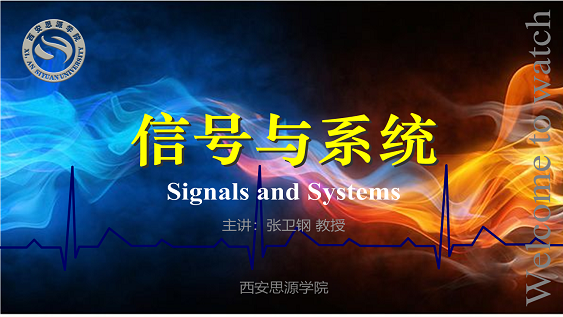
当前课程知识点:Structural Geology > The 6th Chapter Faults > 6.8 Identification signs of faults > 6.8 Identification signs of faults
返回《Structural Geology》慕课在线视频课程列表
返回《Structural Geology》慕课在线视频列表
大家好 这堂课我们来学习
Hello everyone, let's learn in this lesson
断层的识别标志
marks to identify faults.
断层广泛发育于不同的构造环境中
Faults are widely developed in different tectonic environments,
其类型 特征 形成机制各异
and vary in type, characteristics, and formation mechanisms.
我们对断层进行研究
When we study faults,
首要环节是要识别和确定断层的存在
the first step is to identify and determine the existence of faults.
对于出露地表的断层
For faults exposed on the surface,
我们可以通过野外观察识别标志
we can observe their marks in the field
来进行确定
to identify faults.
由于断层两盘的相对滑动
Due to the relative sliding of the two walls of a fault,
断层上升盘常常在地貌上形成陡立的峭壁
the hanging wall of a fault often forms a steep cliff on the landform,
称为断层崖
called a fault scarp.
断层崖不一定就是断层面
A fault scarp is not necessarily a fault plane,
常常是断层面被剥蚀后退而形成的陡坡
and is often a steep slope formed by denudation and retreat of a fault plane.
断层崖受到
The scarp can be eroded and cut by
与崖面垂直方向的水流侵蚀 切割
water flows perpendicular to the scarp face.
被改造成沿断层走向分布
and is modified to a series of triangular cliffs
的一系列三角形陡崖
along the strike of the fault.
这种三角形的陡崖
Such triangular cliffs
称为断层的三角面
are called the triangular surfaces of faults.
有些山脉在延展方向上
Some mountains may encounter transverse or oblique faults
如遇有横向或斜向断层存在
in the direction of their extensions,
则山脉的山脊会相互错开
and the ridges of the mountains will be staggered from each other,
叫错断山脊
called offset ridges,
表征了断层的走滑作用
showing the strike-slip action of faults.
将各山脊错断位置相连
These positions of staggered ridges
即为断层所在位置
connected show where the fault is located.
此外 串珠状的湖泊和洼地
In addition, toruloid lakes and depressions
泉水的带状分布也是断层存在的地貌标志
and zones of spring water are also a sign of fault existence on the landform.
对于一些现今仍然在活动的断层
For some faults that are still active today,
我们称之为活动断层
we call them active faults.
活动断层可能会错断道路栅栏
Active faults may break road and fences,
操场等建筑物
playgrounds, and other buildings.
这些都可以帮助我们进行断层的识别
All these can help us to identify faults.
部分断层没有出露地表
For some faults that are not exposed to the surface,
我们无法直接对其进行观测
we cannot directly observe them,
因而需要借助能探测地下的钻井
need use drilling,
地震 电磁等地球物理 勘探手段
geophysical exploration methods such as earthquake and electromagnetism
对断层进行识别
to identify faults.
如果我们获取某一区域的构造等值线图
On a structural contour map of a certain area,
在等值线图上突然被错断的位置
the positions on the contour map that have breaks
即为断层发育的位置
are the locations of faults.
在钻井过程中 如果没有断层存在
If there is no fault found in the drilling process,
应该从上到下依次钻遇
it should from top to bottom
从新到老的连续地层
drill through successive strata from new to old.
而如果在钻井过程中发现地层缺失
If some strata are found missing during drilling,
则表明钻遇了正断层
it indicates that a normal fault has been drilled.
由于正断层上盘斜向下滑动
Because the hanging wall of a normal fault slides obliquely downward,
导致部分上盘地层错位下降
some strata on the hanging wall fall,
在纵向剖面表现为地层缺失
shown as these strata missing in the longitudinal section.
其地层不连续位置则为正断层所处位置
The length where discontinuity spans marks where the normal fault is.
如果在钻井过程中发现地层重复
If formation repetition is found during drilling,
则表明钻遇了逆断层
it indicates that a reverse fault has been drilled.
由于逆断层上盘斜向上滑动
Because the hanging wall of a reverse fault slides obliquely upward,
部分上盘地层错位上升
some strata on the hanging wall are dislocated and uplifted.
在纵向剖面表现为地层的重复
In the longitudinal section, the strata are repeated.
重复的上盘老地层和下盘新地层
The position where the oldest stratum on the hanging wall contacts
重复的上盘老地层和下盘新地层
with the newest strata of the foot wall
接触位置即为逆断层所处位置
is the location of the reverse fault.
人工地震勘探
Artificial seismic exploration
是研究地下地质构造的重要技术手段
is an important technical means to study underground geological structure.
人工激发的地震波向下传播
Artificial seismic waves propagate downward,
遇到地质界面会向上反射
and will reflect upward when encountering any geological boundary.
我们接受地震反射波并对其进行处理
Seismic reflection waves are received and processed
就得到了这样的地震剖面
and hence seismic profiles are obtained.
地震剖面中连续的线表征地下的地层
Continuous lines in seismic profiles represent underground strata.
我们注意到某些特征明显的地层
We can notice some strata with obvious characteristics.
在某些位置发生了明显的错断
Obvious dislocations may occur in some positions,
这些错断由断层活动造成
which are caused by fault activities.
因此地层错断位置即为断层所在位置
Therefore, the dislocations of strata suggest fault locations.
在某些断层所处位置
At the locations of some faults,
我们也能观察看到较强的反射波组
we can also observe strong reflected wave groups,
与其他地层发射错断 斜交
which are oblique to those from other strata.
这是断层面的反射波
These are reflection waves from fault planes,
也指示了断层的存在
and can indicate the existence of faults.
除地震勘探外 还有重力
In addition to seismic exploration, there is other geophysical methods such as gravity,
电法 磁法等其他地球物理手段
electricity, and magnetism
可以获得地下地质信息
to get underground geological information.
在重力异常 磁异常等探勘成果中
In the exploration results of gravity anomaly, magnetic anomaly, etc.,
我们可以发现在某些位置
we can find that in some places
这些数值发生突变
that values change abruptly.
这些突变位置可能指示了断层的发育
These abrupt changes may indicate the development of faults.
此外
In addition,
相邻两井中标准层的标高相差极为悬殊
the great differences in the elevation of marker beds in two adjacent wells,
近距离内同层地层厚度突变
sudden changes in the thickness of the same stratum within a short distance,
钻井过程中的井漏 井塌等现象
and lost circulation and collapse during drilling
均有可能指示地下断层的存在
indicate the possible existence of underground faults.
断层 这一章节的内容我们就讲到这里
This is all the content about faults.
谢谢大家
Thank you all.
-Geological mysteries hidden in structural geology
--Geological mysteries hidden in structural geology
-Discussion: What phenomena in our daily life are related to Structural Geology?
-1.1 Distinguish the top and bottom of bedding by recognizing the primary structure of sedimentary s
--1.1 Distinguish the top and bottom of bedding by recognizing the primary structure of sedimentary
-1.2 Characteristics of horizontal strata
--1.2 Characteristics of horizontal strata
-1.3 Attitude and its expression for planar and linear structures
--1.3 Attitude and its expression for planar and linear structures
-1.4 Patterns and thickness of outcrop of rock beddings
--1.4 Patterns and thickness of outcrop of rock beddings
-Discussion: How to apply the V rule in structural analysis
-Discussion: When observing geological phenomena in the field, how to distinguish whether the rock se
-Quiz 1
-Assignment
-2.1 Parallel unconformity and its characteristics
--2.1 Parallel unconformity and its characteristics
-2.2 Angular unconformity and its characteristics
--2.2 Angular unconformity and its characteristics
-2.3 Research on unconformity
--2.3 Research on unconformity
-Discussion: What kind of tectonic backgrounds do parallel unconformity and angular unconformity repr
-Quiz 2
-assignment 2
-3.1 Concepts of force and stress
--3.1 Concepts of force and stress
-3.2 Deformation and strain
-3.3 deformation stages of rocks
--3.3 deformation stages of rocks
-3.4 Factors affecting deformation
--3.4 Factors affecting deformation
-Discussion: There is an old saying "constant dropping wears away a stone", which deformation factor
-Quiz 3
-Assignment 3
-4.1 Geometrical elements of folds
--4.1 Geometrical elements of folds
-4.2 Morphological description of folds-part I
--4.2 Morphological description of folds-part I
-4.3 Morphological description of folds-part II
--4.3 Morphological description of folds-part II
-4.4 Special fold types
-4.5 Fold combination types
-4.6 Single-layer buckling folding
--4.6 Single-layer buckling folding
-4.7 Multi-layer buckling folding
--4.7 Multi-layer buckling folding
-4.8 Other folding
-4.9 Study on folds
-Discussion: Are folds commonly accompanied by faults? Why?
-Discussion: Which signs can be used to identify folds in the field?
-Quiz 4
-Assignment 4
-5.1 Classification of joints by geometric features
--5.1 Classification of joints by geometric features
-5.2 Characteristics of tension joints and shear joints
--5.2 Characteristics of tension joints and shear joints
-5.3 Characteristics of structural joints and non-structural joints
--5.3 Characteristics of structural joints and non-structural joints
-5.4 Staging and matching of joints
--5.4 Staging and matching of joints
-5.5 Preparation and analysis of rose diagrams of joints
--5.5 Preparation and analysis of rose diagrams of joints
-Discussion: Which kind of rock may joints prevail in?
-Discussion: What is the relationship between joints and oil and gas exploration
-Quiz 5
-Assignment 5
-6.1 Fault geometrical elements
--6.1 Fault geometrical elements
-6.2 Classification of faults
--6.2 Classification of faults
-6.3 Normal fault and normal fault system
--6.3 Normal fault and normal fault system
-6.4 Reverse fault and reverse fault system-part I
--6.4 Reverse fault and reverse fault system-part I
-6.5 Reverse fault and reverse fault system-part II
--6.5 Reverse fault and reverse fault system-part II
-6.6 Strike-slip fault and strike-slip fault system
--6.6 Strike-slip fault and strike-slip fault system
-6.7 Anderson theory of faulting
--6.7 Anderson theory of faulting
-6.8 Identification signs of faults
--6.8 Identification signs of faults
-Discussion: In recent years, earthquakes occurred frequently. According to your knowledge and unders
-Quiz 6
-Assignment 6
-7.1 The concept and development history of tectonics
--7.1 The concept and development history of tectonics
-7.2 Plate tectonic theory
-7.3 Sedimentary basins under plate tectonic theory



